Mars Perseverance: How does a rover gather rock samples?
- Published
- comments
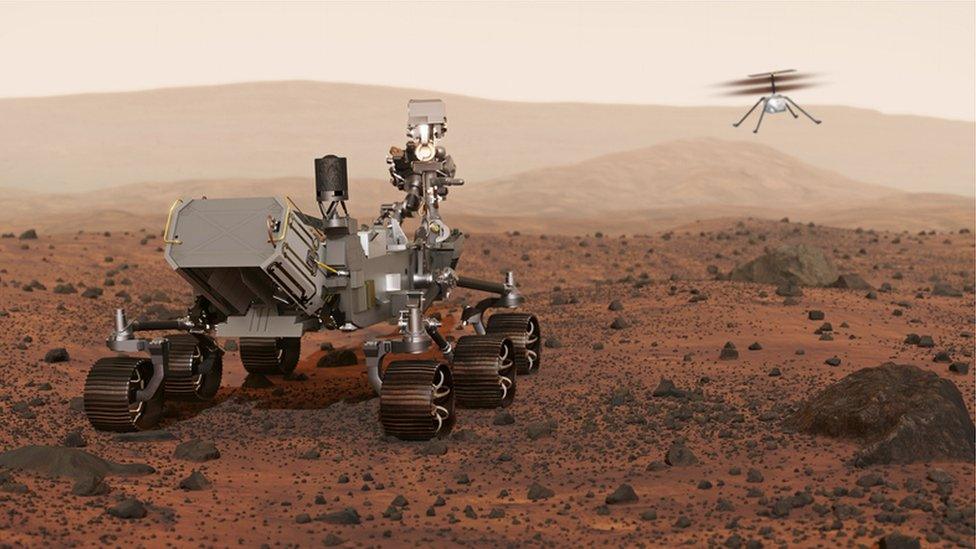
Nasa's Mars Perseverance rover is preparing to collect another rock sample after a failed first attempt on 6 August.
Perseverance landed in the Jezero crater on Mars to study the planet's landscape and discover any evidence of things living there.
The previous attempt to gather a sample failed because the rock they were trying to gather was too crumbly and it broke into tiny bits which did not stay in the tube.
Scientists behind the mission are persevering though and are preparing the rover to attempt to collect its second sample from a different area where the rocks look harder.
They will cut out a core of the rock, similar in width to a pencil, then store it in a tube on the rover so it can eventually be transported back to Earth to be studied.
Mars' missing rock - what happened to the first sample?
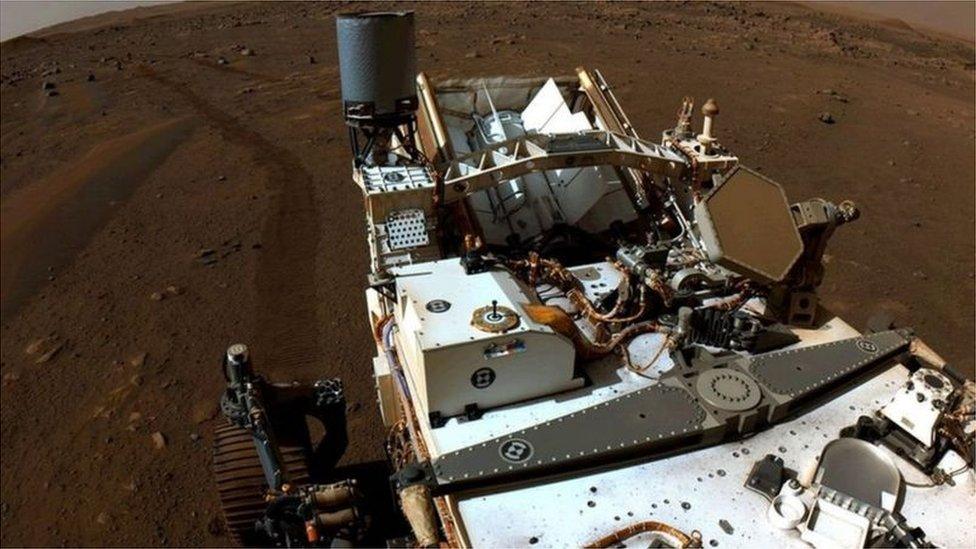
The Mars Perseverance rover first landed on the Red Planet on 18 February 2021, the mission aims to learn more about the possibility of life on Mars
Scientists were confused as to why no sample was left in the tube after drilling because all the robotic mechanisms appeared to be working well.
The team at Nasa is confident that the lack of rock sample isn't because of technical faults with the rover, but think it might be that the rock didn't react as expected to the drilling process.
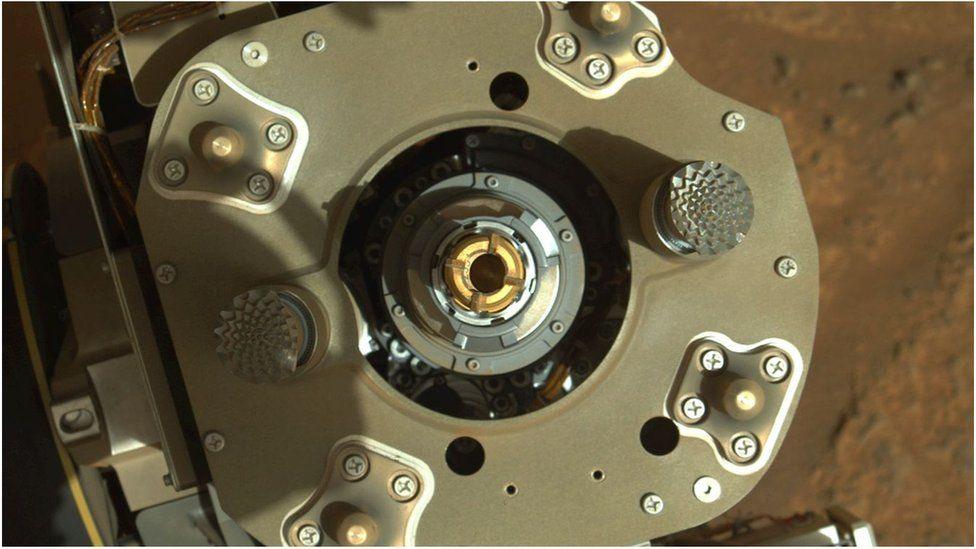
Perseverance has a two-metre-long arm that has a drilling and coring system
The first attempt at collecting a sample will not go to waste though - scientists believe that the empty tube will be filled with Mars' atmosphere, which is still useful for them to study.
The rover will now try collecting a rock sample from an area known as the "Citadelle", where the rock is hardened from Martian winds and is expected to handle the drilling and coring process better.
How was the Perseverance rover built?
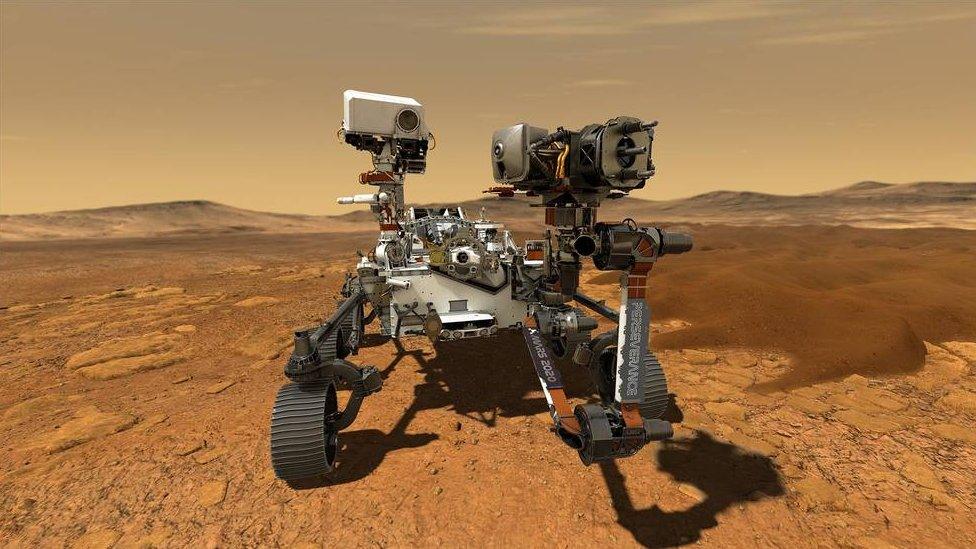
This is an artist's impression of a rover operating on the surface of Mars
Engineers at Nasa built the Perseverance Rover using a similar designs to the Mars Curiosity rover.
The rover's body is called WEB, which is short for warm electronics box. It has a strong layer on the outside that keeps the rover's computer and electronics protected and temperature controlled.
A big difference between the Curiosity and Perseverance rovers is the large robotic arm, the Perseverance has an updated version.
The Curiosity Rover studied samples while it was on Mars, so it didn't need to drill and store samples like the Perseverance rover does.
What is the rover's job on Mars?
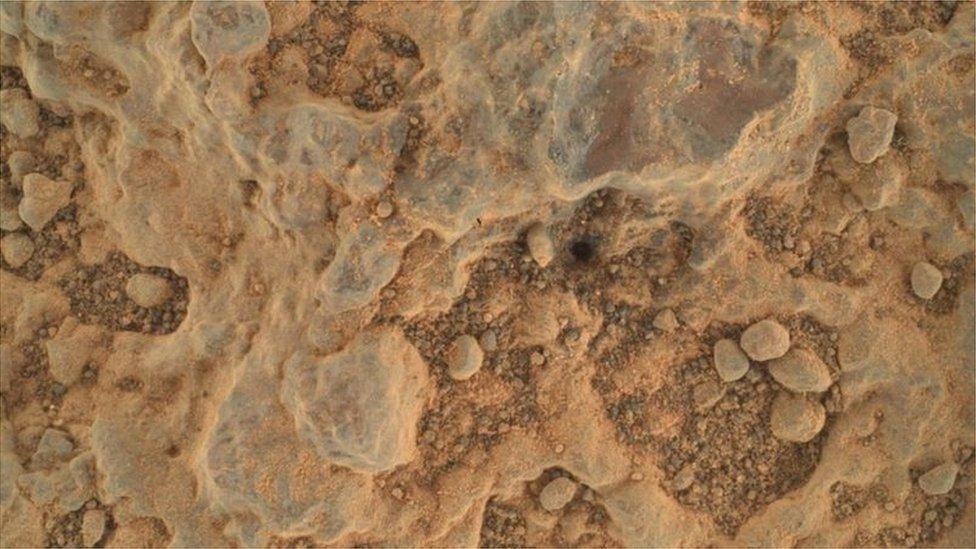
The surface of Mars is rough and rocky
The rover is designed to roam the planet taking pictures and rock samples, to send them back to Earth for scientists to get a better look at the landscape on Mars.
The Mars Perseverance rover uses its two-metre-long arm, that has a drilling and coring system on it, to collect samples of rock and place them into titanium cylinders.
What happens after they have the samples?
After Perseverance has travelled between 1.6 and 3.1 miles and filled up to eight sample tubes, it will return to its original landing site to wait.
Nasa is planning more missions to Mars to collect these samples and bring them back to Earth for scientists to study.
- Attribution
- Published27 June 2021
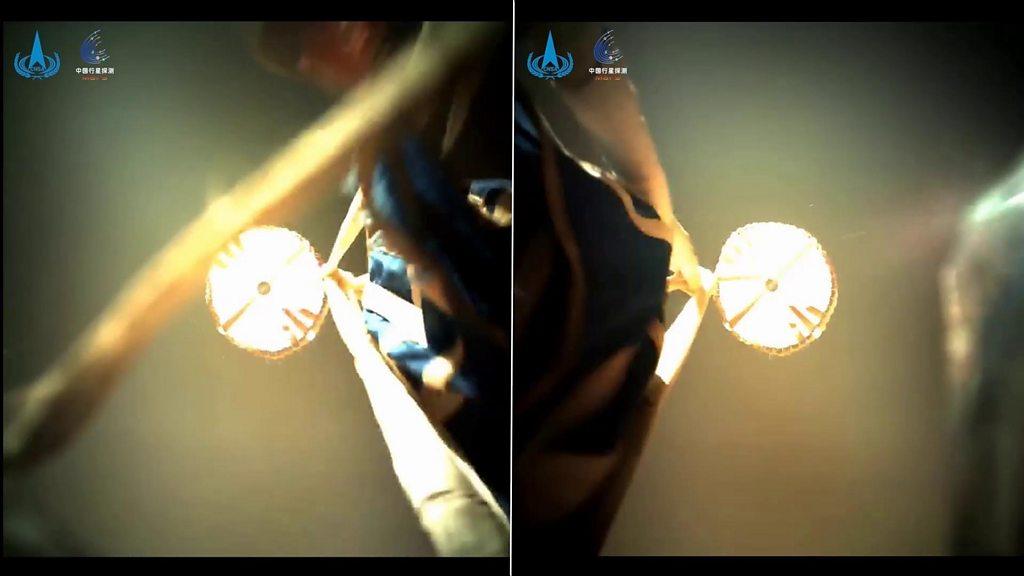
- Published16 February 2021

- Published21 June 2021

- Published6 November 2015

